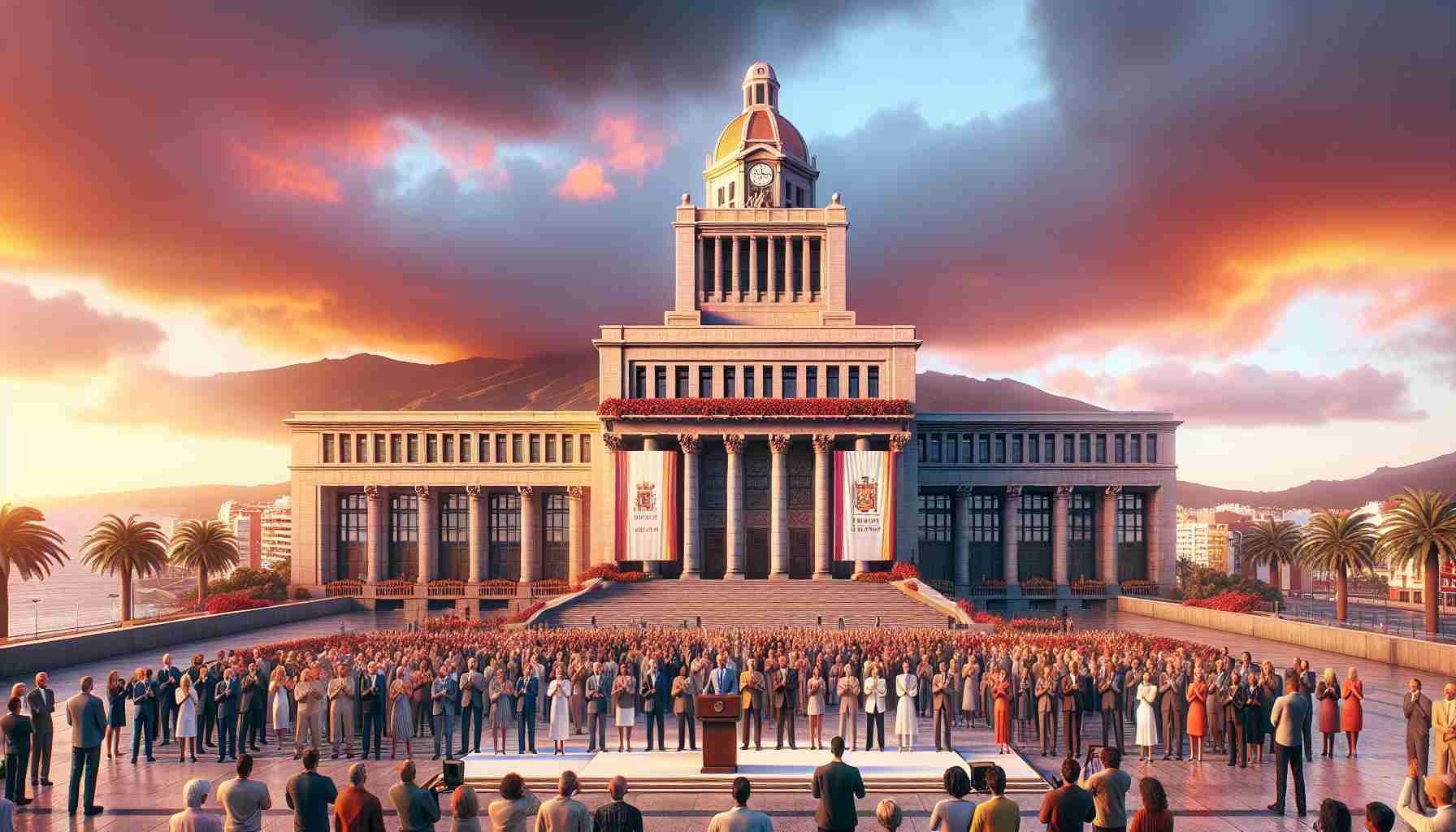
Tenerife Government to Rename Monument for Unity and Progress
The Tenerife Government has announced plans to change the name of the ‘Monument to the Angel of Victory,’ commonly known as the Franco Monument, to ‘Monument for Unity’ following a court ruling requiring the initiation of Cultural Interest (BIC) proceedings for the artwork located in the Anaga avenue of Santa Cruz de Tenerife.
The decision, affirmed by President Rosa Dávila and Vice President Lope Afonso, aims to align the monument with democratic values and harmonious coexistence, as advocated by current historical memory legislation. Acknowledging the judicial mandate, the officials emphasize the necessity of redefining the monument’s essence to reflect contemporary societal principles.
Recently challenged by the Association for the Investigation and Protection of Historical Heritage San Miguel Arcángel, the court’s verdict underscores the artistic and regional significance of the Ávalos sculpture in the Canary Islands. Not only hailed for its sculptural merit, but also recognized as a unique testament to the artist’s legacy in the region.
President Dávila underscores, “As an institution, we staunchly defend freedom and democracy. Preserving historical elements that do not uphold present democratic values contradicts the Law on Historical Memory.” The intention is to reclaim the monument as a symbol of unity, concord, and resilience for all Tenerife residents, rather than perpetuating the glorification of a dictator’s triumph from a dark era in history.
Vice President Afonso further emphasizes the aspiration for the monument to symbolize unity and promote peace and understanding among citizens. Viewing the renaming as an opportunity to not only comply with the court’s ruling but also to instill present-day democratic values and advocate for reconciliation and peace within Tenerife society.
The Tenerife Government’s decision to rename the ‘Monument to the Angel of Victory’ to ‘Monument for Unity’ marks a significant shift towards aligning with democratic principles and fostering harmonious coexistence in Santa Cruz de Tenerife. While the previous article highlighted the court ruling mandating the change and the government’s commitment to redefining the monument’s essence, there are additional aspects to consider in this evolving discussion.
Key Questions and Answers:
1. What implications does this renaming have on Tenerife’s historical narrative?
It represents a pivotal moment in confronting the legacy of Franco’s dictatorship and acknowledging the need to reinterpret symbols in line with modern democratic values.
2. How does the community perceive this renaming?
The renaming reflects differing opinions within the community, with some viewing it as a positive step towards unity and progress, while others may see it as erasing historical significance.
Key Challenges and Controversies:
1. Preservation of Historical Memory: Balancing the preservation of historical heritage with the imperative to uphold democratic values poses a challenge, as some may argue for the preservation of monuments as historical artifacts.
2. Social Reconciliation: The renaming process raises questions about how to address differing perspectives within society and promote dialogue that fosters reconciliation and understanding.
Advantages:
1. Promoting Unity: The renamed monument has the potential to become a symbol of unity, reflecting shared values and aspirations for a cohesive society.
2. Democratic Values: By aligning with contemporary democratic principles, the monument can serve as a testament to progress and inclusivity.
Disadvantages:
1. Eroding Historical Significance: Some may argue that renaming the monument risks erasing important historical context and artistic merit associated with the original name.
2. Controversy and Division: The decision could spark further controversy and division among those who hold differing views on how historical symbols should be interpreted and preserved.
As the discussions surrounding the renaming of the monument continue, it is essential for stakeholders to engage in meaningful dialogue, consider diverse perspectives, and navigate the complexities of historical memory and societal unity.
For more information on historical memory and cultural heritage preservation in Tenerife, visit Tenerife Government.